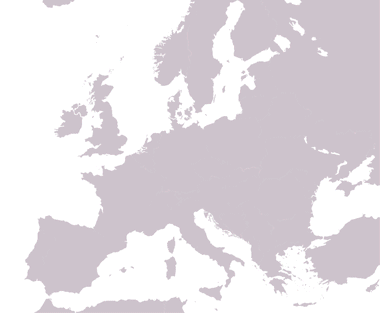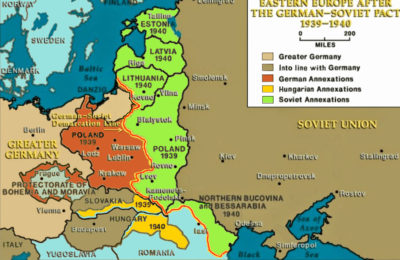A nation must think before it acts.

Western policymakers charged with making decisions related to the security and defense of the Baltic states face intractable questions pertaining to uncertainty about Russian interests, intentions, and the future. To address these issues, policymakers should employ the invaluable tool of history: its relevance is always indirect and its utility is often rendered through analogy. Yet, Western policymakers will be more familiar with some histories over others and will likely draw upon the history of the West and Western-centric analogies, which are not necessarily the most relevant for, or compatible with, the context and requirements of Baltic defense. Rather, these decision makers should use or study Baltic strategic history.
Neither the Baltic states nor Russia necessarily shares the historical episodes reflected in the West’s preferred analogies, or if they do, they typically derive conclusions which are greatly at variance with those drawn by the West. Western policymakers focus on relatively narrow, often extreme historical episodes, such an emphasis on Hitler and Nazi Germany to characterize Russia’s actions in Crimea in February and March 2014. Yet, it is difficult for many to accept that Vladimir Putin might be analogous to Hitler or that Hitler was anything other than an aberration in modern history. Comparisons to Hitler have become so commonplace and, by extension, so non-serious that the comparison itself has become a well known internet meme called Godwin’s Law, which states that during any extended discussion, the chances of one party invoking Hitler or the Nazis approaches 100%. This particular comparison does little for the credibility of the analogy and renders it inherently suspect for an increasingly large portion of any Western democratic public. The frequent invocation of this analogy with regard to Putin and a reluctance to countenance it pose the larger danger of minimizing consideration of Russian pursuit of an aggressive and even expansionist foreign policy. Further, whereas the West analogizes Hitler on the basis of his insatiable territorial appetite and appeasement at the Munich Conference of 1938, the Russians draw different conclusions—that appeasement was the West enabling Hitler’s ambitions, up until he turned on them. The history with which Western policymakers are familiar tends to be inapt for considering either the Baltic states or Russia.
The Baltic States and Russia: A Shared History
The shared history of the Baltic states and Russia is relevant for the contemporary topic of Baltic defense. While the physical geography remains essentially the same, the political geography differs. The historical and modern cultures involved are more similar to each other than to those of the West’s standard suite of analogies. Accepting this premise, the question becomes: which issue should be analogized? The most fundamental question to the topic of Baltic defense concerns Russian interest in the Baltic—what are Russian interests and how do they manifest in Russian policy? What might be gleaned from Baltic-Russian history? Given the focus of the question, Russia is necessarily the subject, and the Baltic states are the object.
Russia has shown sustained interest in the Baltic over the course of a millennium. A topical listing in brief equals a whirlwind tour through the history of northern Europe. The early Rus’ princelings, prone to squabbling among themselves, were interested in the Baltic tribes for one thing only—tribute, not formal dominion. This situation only changed starting in 1200 when the German crusaders began carving out their own niche, Livonia, German dominion pushed out informal Russian influence, and the Baltic was irrevocably stamped as culturally western in its physical environment and worldview. Two to three hundred years later, once the power of the Mongol Golden Horde receded, Muscovy emerged as the leading Russian state and developed a largely economic interest in Livonia, home of Hanseatic cities such as Riga and Reval (Tallinn) which were important to Baltic commerce. Seeking tribute and suzerainty, Muscovy invaded in 1501, but Livonia parried the blow. Fifty years later, Muscovy returned with a vengeance, coincidentally with other interested neighboring great powers such as Denmark, Sweden, and Poland-Lithuania, which were either similarly interested in the eastern Baltic littoral or feared Russia’s presence there. This sparked a century and a half of warfare which only ended with the Treaty of Nystad in 1721.
During this period of near constant war, Muscovy transformed into Russia but retained its old commercial interests—the region was vital to Peter the Great’s vision of opening a window to the West. Yet, Russian interest gained additional dimensions, including simple imperialism. By 1795, Russia dominated where larger and smaller powers had once existed: Livonia followed by the Duchy of Courland, a partitioned Poland-Lithuania, and a vanquished Sweden. Russia had gained its window to the West, and the ports of the Baltic provinces found their places among the leading ports of its empire.

(Source: Spiridon Ion Cepleanu/WikiMedia Commons)
In 1918-19, when World War I raged, empires disintegrated, and revolutions took hold, the three Baltic republics formally declared and successfully fought for their independence against all comers—both White and Red Russians, and the Germans as well. The nascent Soviet Union professed disinterest in the Baltic republics and recognized their sovereignty in perpetuity. Russian commercial interest had disappeared for the Soviet Union evinced no desire to trade with the West. Yet, defense replaced commerce as the overriding Russian interest. During the interwar period, the Soviets were concerned with the danger of a German invasion through the Baltic states, which was remedied by the Molotov-Ribbentrop Pact’s secret protocol and by invading and annexing the three countries in 1939-40. The security importance of the newly conquered Baltic Soviet Socialist Republics only grew for what was the Soviet Union’s direct maritime frontier with the West. Heavily garrisoned, the Baltic provided much needed depth in the north.
This strategic depth vanished in 1991 once the Baltic states declared the continuation of their independence and the Soviet Union subsequently collapsed. However, already in the early 1990s, Russia was demonstrating a keen interest in the Russian-speakers there, especially in Latvia and Estonia, whose in-migration and subtle political instrumentalization Russia had itself orchestrated. Russia’s interest was sufficiently strong that it resulted in the threat of a continued Russian occupation—as at that point the Red Army had not yet withdrawn from the Baltic states—and the Russian Army was openly discussing and practicing invasion scenarios. No such thing occurred in the end, and possibly for the first time since before the German crusade, Russian interest did not manifest itself in actual use of military power.
Russia and the Baltics Today
What interest might the Russian Federation have in the Baltic states today? Commerce and economics for gain are unlikely to be resurrected; Russia under Putin has consistently sought to use trade punitively, minimizing and bypassing the Baltic states with regard to energy transport, foodstuff imports, etc.

NATO
Simple imperialism—seizing more territory, more resources, and more population in geopolitically advantageous regions—is a possible motive, with arguments both for and against. An increasing share of non-Russian inhabitants combined with the catastrophic collapse of ethnic Russian demographics may lead to a decreased political desirability of incorporating even more non-Russian territories, given the perceived relative importance of an ethnic Russian majority for Russian state stability. On the other hand, the Baltics as old imperial territories and the possibility of a potential easy victory over NATO to unravel the European security order may increase the political allure of restoring Russian imperialism to the region.
Genuine or politically advantageous concern for ethnic Russians has motivated Russian foreign policy toward the Baltic states since the early 1990s, and Russian compatriots abroad remain a staple in official Russian foreign policy discourse today. Except for the very first incident in the early 1990s, however, this has not manifested as threats of military force in the Baltic—unlike Georgia in 2008 and Ukraine in 2014.
Security remains the most likely Russian interest in the Baltic states. Russia’s western border is the furthest east it has been in 300 years, a change which occurred less than thirty years ago. Russia’s current ruling elite matured at a time when the eastern Baltic littoral was Russian-dominated territory, vital strategic depth for the Soviet Union. This geopolitical and geostrategic fact was part of their formative context, a defensive position since vanished, for which they may still yearn as a vital tenet of defense. The Russians have certainly made no secret of their position that the stationing of NATO forces—no matter how small—in the Baltic region is an affront to their own national security.
How might Russia’s present interests in the Baltic states manifest themselves in Russian policy? Traditionally, Russia has used force during times when it has not controlled the Baltic states. Whether it will do so again may depend on how the geostrategic situation today and tomorrow differs from those of the past—from Russia’s perspective. Except for the example of the German crusades, the eastern Baltic littoral always represented a relative power vacuum into which Russia advanced. Ensuring Russian quiescence in the Baltic may require demonstrating that the Baltic states are not a power vacuum on the outer edges of the Western political and security order.



